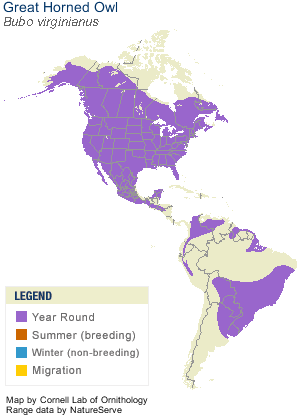Great Horned Owl
Luna

About Luna:
In April 2008, a nestling Great Horned Owl arrived at the Ojai Raptor Center, in southern California. As Luna grew, her caretakers noticed that its beak was not developing symmetrically causing the maxilla (upper beak) to cross over the mandible (lower beak), due to either a birth defect or a severe injury at birth. In the wild, raptor beaks are naturally worn down from breaking bones in their prey and pulling meat off the bones. Beaks are composed of keratin, as our fingernails are, and like nails, grow continually.
Luna's top beak must be filed down regularly, or it will continue to grow out crookedly and curve beneath the mandible, impaling its lower jaw and finally causing her to starve to death. Arriving at WERC in July 2008, one of Luna's most important roles is to act as a surrogate parent helping to prevent human imprinting from happening to young Great-Horned Owls. She successfully mentored her first 'baby' in the spring of 2009.
In December 2008, Luna underwent eye surgery (keratectomy) to repair an ulcer on her left eye. After several months of daily medication and recuperation, subsequent vet exams proved the operation a success!
Luna's name means "Moon" in Spanish, appropriate for a night-hunting bird.

Great Horned Owl
Bubo virginianus
Among the Great Horned Owl"s nicknames are, "Winged Tiger", "Feathered Wildcat", and "Flying Mousetrap".
Measurements: Length: 18"-25" Wingspan: 36"-60" Weight: >3 lbs
Voice: Series of low, sonorous, far-carrying hoots, "hoo, hoo-hoo, hoo, hoo,"
Habitat: Forests, deserts, open country, swamps, and even city parks.
Nesting: Monogamous. 2 or 3 white eggs on the bare surface of a cliff or cave or even on the ground. 1 brood per year. Young fed by both parents.
Lifespan in the wild: 27 years
Range: Great-Horned Owls reside throughout North America.
Prey: Great Horned Owls prey on a wide variety of creatures, including grouse and rabbits as well as beetles, lizards, frogs, and birds, including crows, ducks, and other owls. On occasion, it even captures skunks (the owl has no sense of smell)! Chiefly nocturnal but sometimes hunts during the day.
